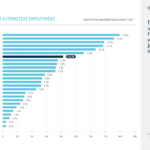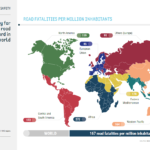Since the credit crisis began, governments around the world have passes many stimulus packages to restart stalled economic growth. For example, today the government of Malaysia announced a second a stimulus package of US$16.3B just after announcing the first stimulus four months ago. In the US, many stimulus packages have been announced during the past and the present administrations. On Feb 13, the US Congress approved a new package of $787B which is 5.6% of GDP. The initial impact of this package will be seen in the years 2009-11. Other countries such the UK, Germany, Canada, etc. have also announced stimulus packages. I wanted to find out how these packages compare across the countries.
My research led me to a paper titled “The Size of the Fiscal Expansion: An Analysis for the Largest Countries” released by IMF last month. The following are some interesting takeaways from this paper.
Of all the large countries that have passed stimulus packages, the US stimulus is the largest in terms of GDP during 2008-10.
Comparison of Stimulus Packages in Large Countries
Source: IMF
The US package amounts to a cumulative 4.8% of GDP during 2008-10. According to Wikipedia, the 2008 US GDP is estimated to be $14.3 Trillion. India and Italy have the lowest packages at less than 1% of their GDP.
Next to US, China has the largest stimulus. Though UK is one of the worst affected countries, the package in the same period is less than Germany’s figures.
Infrastructure spending by the US is a small portion of the overall packages. As per U.S. CBO and IMF staff estimates, just $32B will be spent on infrastructure projects in 2009 and $47B each in 2010 and 2011.Countries with high public debt have passed smaller fiscal stimulus packages (India, Italy as referenced above). Of the nine countries listed above, only Canada, U.S. and Japan are providing tax benefits to both companies and individuals. The rest of them provide tax benefit only to individuals. One common theme across these countries is that all are planning to invest more in infrastructure project.
You can download the complete paper here.



